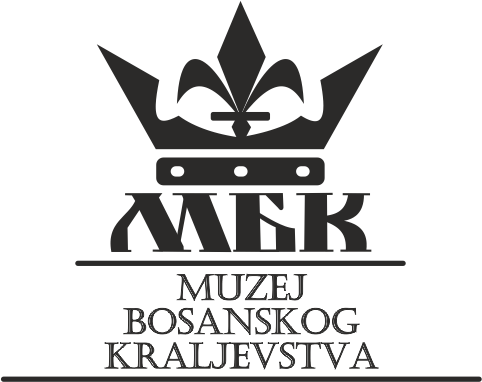There is no doubt that Radimlja’s necropolis is one of the most impressive and well-known necropolises of stećak tombstones in general. It is fair to state that this necropolis has an iconic cultural character. This site is located in Stolac, an area that represents in its entirety the richest and most comprehensive collection of stećak tombstones. It is located in Vidovo polje, 3 kilometers west of Stolac, on both sides of the road that leads from Domanovići to Stolac. The necropolis consists of 133 stećak tombstones, however, the fact that a certain number of stećak tombstones were destroyed during the construction of the road that passes through the necropolis itself should be taken into account, so this necropolis originally contained about 150 stećak tombstones. The continuity of life and death is observed here as usual. Illyrian burial mounds are located in the immediate vicinity of the necropolis. According to the basic parameters, the necropolis dates back to the 15th and 16th centuries.
This necropolis is certainly in direct connection with the stone chairs in the village of Batnoge on the Ošanići hill above this site. From the inscription on one chair, it can be seen that it belonged to Duke Stjepan Miloradović, while the stećak of Stjepan’s son Radoje is preserved on Radimlja. These are stone monuments and stećak tombstones that correspond to each other in terms of time and content. There was a medieval settlement in Ošanići that belonged to the noble family of Miloradović-Hrabren, and members of this family and their relatives and subjects were buried in Radimlja. The Miloradovići-Hrabreni were a Vlach family. The progenitor of the lineage was a certain Milorad, who was the elder of the lineage at the end of the 14th century. His son Stjepan Miloradović is mentioned in Ragusan sources in March 1416. He had three sons, Petar, Radoje and Vukić. Petar appears in Ragusan sources between 1473 and 1486, Radoje for the last time in 1477, and Vukić in 1496. Upon the Ottoman conquest of Bosnia, they entered the Ottoman service. This family had possessions between Stolac and Mostar, and they commanded Vlach military detachments. Petar is mentioned from 1468 to 1486 as a timarnik (a person who owns land in the Ottoman legal system), he served as katunar of the Vlach lineage Hrabren and duke of the entire nahiya of the Donji Vlasi, which shows the integration of the lineage into the newly created political and social system. Due to their social rank, Duke Petar and members of his family, princes Vukac, Pavko, Stjepan and Radivoj, also received the status of Ragusan citizens.
A total of nine basic forms of stećak were recorded in this necropolis: 36 slabs, 1 slab with a stand, 27 chests, 24 chests with a stand, 4 high chests, 5 high chests with a stand, 2 gables, 31 gables with a stand, and 3 crosses. Inscriptions are found on only five stećak tombstones. In addition to the aforementioned Radoje from the Miloradović lineage, Radoje Vuković, Vukac Napetović and Vlađ Vlahović are also mentioned. The names of three stonemasons are mentioned. The decoration of the stećak tombstones in this necropolis was done in shallow relief. Among the 133 pieces, 63 are ornamented. The ornamentation of these stećak tombstones ranges from figure representations on all four lateral sides to a simple plastically convex line. Among the ornaments are a trefoil (vine), a braided rope ornament, a plastic zigzag ornament, rayed circle, star, crescent, rosette, cross, bunch, millstone, and stick. Figurative plays can be represented by male figures with their right hand raised and in plays dominated by certain scenes such as hunting, hearses and battle-tournaments. Stećak tombstones were built from limestone that was most likely cut into the rock of Ošanići hill. They were probably made at the quarry itself up to a certain stage, and then, after being transported to the necropolis, they were decorated and ornamented there. This is indicated by the fact that some of the stećak tombstones have not been finished completely.
Sources and literature:
- Benac Alojz, “Radimlja”, u: Srednjovjekovni nadgrobni spomenici Bosne i Hercegovine, vol. I, Izdanje Zemaljskog muzeja u Sarajevu, Sarajevo 1950.
- Benac Alojz, “Radimlja – Položaj nekropole”, Slovo Gorčina, Mostar 1997, 23-32.
- Bešlagić Šefik, Stećci – kultura i umjetnost, Veselin Masleša, Sarajevo 1982, 86, 172, 213, 228, 246, 292, 350-351, 383-384.
- Bešlagić Šefik, Stećci. Kataloško-topografski pregled, Veselin Masleša, Sarajevo 1971, 372-373.
- Bešlagić Šefik, Leksikon stećaka, Svjetlost, Sarajevo 2004, 55.
- Bogičević Vojislav, “Vlasteoska porodica Miloradovića-Hrabrenih u Hercegovini”, Glasnik Zemaljskog muzeja u Sarajevu, Nova serija, no. VII, Sarajevo 1952, 139-160.
- Đulić Omer, “Stećci na Radimlji”, Most, no. 200, godina XXXI, juli august, Mostar 2006.
- Hrabak Bogumil, “O hercegovačkim vlaškim katunima prema poslovnoj knjizi Dubrovčanina Dživana Pripčinovića”, Glasnik Zemaljskog muzeja u Sarajevu, Nova serija, no. XI, Sarajevo 1956, 33-38.
- Lovrenović Dubravko, Stećci. Bosansko i humsko mramorje srednjeg vijeka, Rabic, Sarajevo 2009, 164-168, 173-174.
- Miletić Nada, “Radimlja 3”, in: Arheološki leksikon Bosne i Hercegovine, vol. III, ed. Borivoj Čović, Arheološka nalazišta regija 14-25, Zemaljski muzej Bosne i Hercegovine, Sarajevo 1988, 190.
- Tošić Đuro, “Porodica Miloradović-Stjepanović iz vlaškog roda Hrabrena”, Istorijski zapisi, vol. LXXI, no. 3-4, Podgorica 1998, 93-106.
- Tošić Đuro, “Hercegovačka porodica Miloradović”, in: Srpska proza danas: Kulturna i duhovna istorija Hercegovine, Ćorovićevi susreti proznih pisaca u Bileći i naučni skup istoričara u Gacku 19-21 septembar, 2003, Prosvjeta, Gacko 2004, 277-300.
- Truhelka Ćiro, “Stari hercegovački natpisi”, Glasnik Zemaljskog muzeja u Sarajevu, vol. V, no. 1, Sarajevo 1893, 93-94.
- Vego Marko, “Novi i revidirani natpisi iz Hercegovine”, Glasnik Zemaljskog muzeja u Sarajevu, Arheologija, Nova serija, no. XVII, Sarajevo 1962, 205-206.
- Vego Marko, “Kulturni karakter nekropole Radimlje kod Stoca”, in: Srednjovjekovna Bosna i evropska kultura, Izdanje Muzeja grada Zenice III, Zenica 1973, 298.
